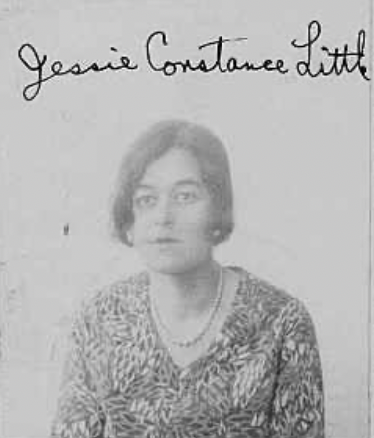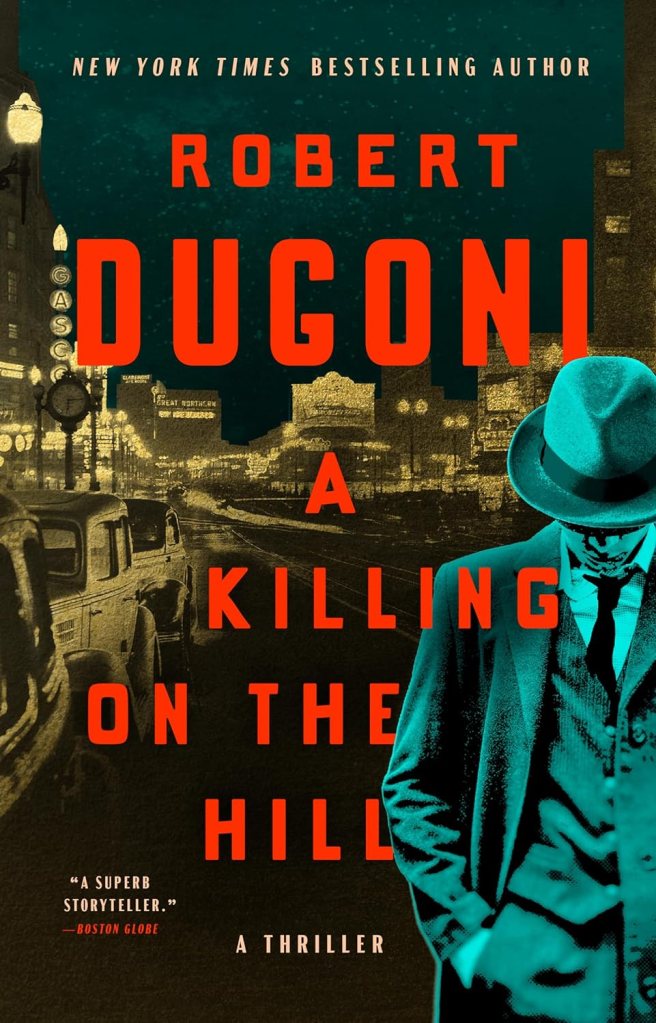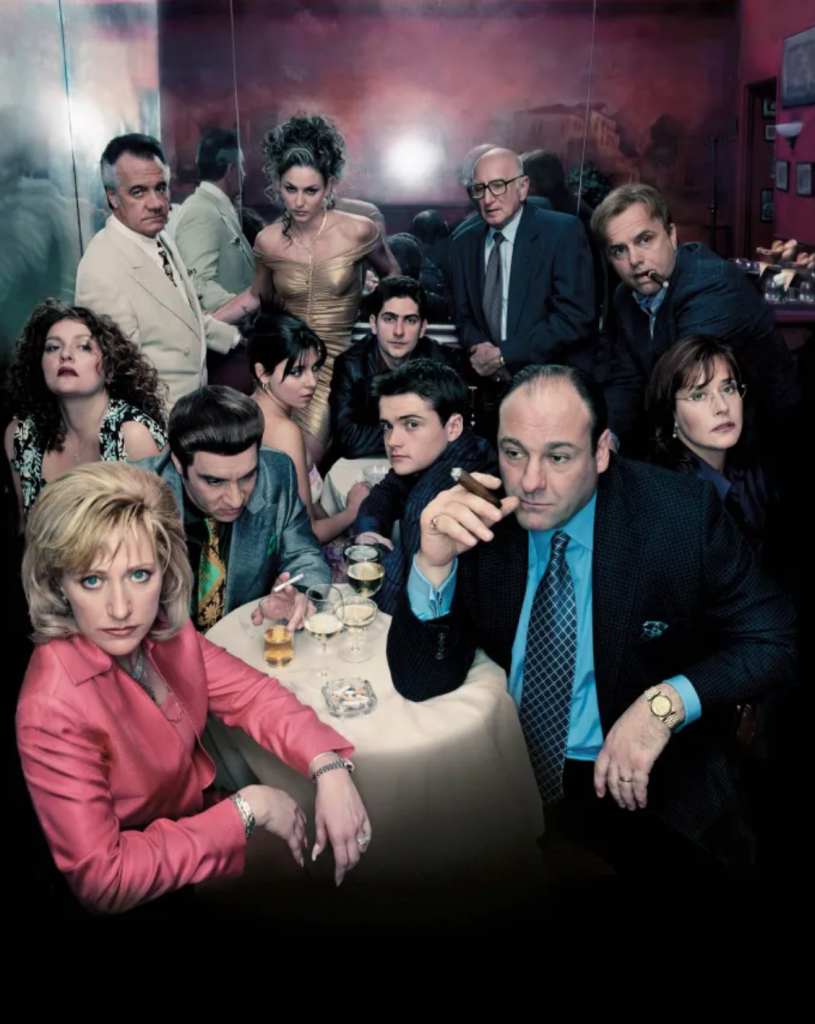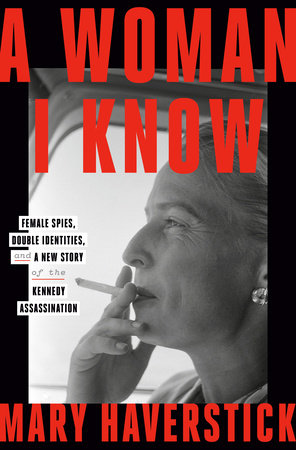
How Baseball’s Official Historian Dug Up the Game’s Unknown Origins (hint: it involves a newspaper…)
Crosswords Reach Down and Across a Century
Dewey Decimal: The sorting system that revolutionized libraries
One of the World’s Oldest Surviving Books Is for Sale
22-Foot-Long Scroll From 19th Century Features Timeline of Perceived World History Up to That Point
The First Issue of Superman Just Became the Most Valuable Comic Book in the World
A Small, Common Sign Sparks A First Amendment Fight
Questions over Shakespeare’s authorship began in his lifetime, scholar claims
The experts: librarians on 20 easy, enjoyable ways to read more brilliant books
This Tiny Scribble by Michelangelo Just Sold for Over $200,000
More than a quarter of readers of YA are over the age of 28 research shows

doofus (n.): student slang, “dolt, idiot, nerd,” by 1960s. “Dictionary of American Slang” says “probably related to doo-doo and goofus.”

Don Winslow Explains Why He’s Trading Crime Novels for Never-Trump Politics
Indie publishers grapple with Small Press Distribution closure
To make sure grandmas like his don’t get conned, he scams the scammers
US Loses Staggering Amount of Money to Fraud Each Year
FBI says Chinese hackers preparing to attack US infrastructure
The first two segments of Four Died Trying (JFK, Malcolm X, MLK, and RFK) are now available
How the CIA Set Up Shop in Miami – And Immediately Started Plotting to Kill Castro

weirdo (n.): “strange person,” 1955, from weird. Compare earlier Scottish weirdie “young man with long hair and a beard” (1894).

MAGA Rage Targeting Local Librarians Is Getting Uglier
These Were the Most Challenged Books in America Last Year
American Library Association reports 65% increase in challenged or banned books last year
Smithsonian staff fear drag clampdown after GOP questioning, emails show
Red states threaten librarians with prison — as blue states work to protect them

Seattle Public Library resorting to rolling branch closures
What to know about the latest trial involving Amanda Knox
Move over, Fabio. Romance novels have changed — and so has the community
Hiker stumbles upon human remains at campsite near Oregon coast, cops say
Multnomah County libraries increase staff as service disruptions continue
Boeing whistleblowers describe ‘criminal cover-up,’ safety risks to Senate
FTC: Amazon execs used app to hide information related to antitrust probe

goof (n.): From 1916, “stupid person,” American English, perhaps a variant of English dialect goff “foolish clown” (1869), from 16th C. goffe, probably from French goffe “awkward, stupid,” which is of uncertain origin. Or English goffe may be from Middle English goffen “speak in a frivolous manner,” which is possibly from Old English gegaf “buffoonery,” and gaffetung “scolding.” Sense of “a blunder” is c. 1954, probably influenced by gaffe. Also compare goofer, goopher which appears in representations of African-American dialect from 1887 in the sense of “a curse, spell,” probably from an African word.
goof (v.): From 1922, “waste time;” 1941; “make a mistake,” from goof (n.). Goof off is from 1941, originally World War II armed forces, “to make a mistake at drill;” by 1945 as “to loaf, waste time,” also as a noun for one who does this. Related: Goofed; goofing.

Got a $20 bill? It could be worth $35,000.
How does blood spatter in space?
A Secret Code May Have Been Hiding in Classical Music for 200 Years
Fool’s Gold Might Actually Become Valuable
The Titanic drug poisoning: is one of the greatest mysteries in film history about to be solved?
Honeytraps don’t work on French spies as their wives are so used to them cheating: documentary
The Sci-Fi Writer Who Invented Conspiracy Theory
Mata Hari: Her Severed Head was Kept in a Paris Museum. Then it Disappeared.

kooky (adj.): 1959, American English, originally teenager or beatnik slang, possibly a shortening of cuckoo. Using the newest show-business jargon, Tammy [Grimes] admits, “I look kooky,” meaning cuckoo. [Life magazine, Jan. 5, 1959]

Several writers decline recognition from PEN America in protest over its Israel-Hamas war stance
The PEN World Voices Festival has been canceled.
A Prominent Free-Speech Group Is Fighting for Its Life
Booker prize urged to consider name change over slavery link

‘I will defeat Richard Osman!’: Holly Jackson on being Britain’s top selling female crime author
Cowriters SJ Rozan & John Shen Yen Nee On Reimagining Forgotten Histories
Barnes & Noble workers plan union drive at largest US bookstore chain
Arthur Conan Doyle Agreed to Write ‘The Sign of the Four’ at a Fateful Dinner in 1889
My First Thriller: Hank Phillippi Ryan
Edinburgh international book festival announces ‘relaunch’ as sponsor row remains unresolved
How to shop in used-book stores: 14 tips from a bibliophile
A Bloody-Minded Business: Julian Symons’ Evolution as a Crime Fiction Critic
Patricia Highsmith Was Almost as Twisted as Tom Ripley
Sir Arthur Conan Doyle manuscript could fetch almost £1m at auction
2024: A Year of Literary True Crime
Good Reads: Erotic Review relaunches with a suggestive new look
Six Cult Classics You Have to Read
Michael Dirda on curating stories for a Folio Society anthology of “Weird Tales”
Overdue Book Returned to Colorado Library After 105 Years
Yes, It’s Okay to Throw Away a Book
French national library quarantines books believed to be laced with arsenic. Chemical thought to be in emerald green covers of four 19th-century books identified by Poison Book Project
Georgians arrested over cross-Europe thefts of rare library books
100 Years of Simon and Schuster
‘James,’ ‘Demon Copperhead’ and the Triumph of Literary Fan Fiction

May 2: Jeneva Rose signs Home is Where the Bodies Are, Powell’s, 7pm
May 8: Local author Katrina Carrasco discusses new novel with Nicola Griffith. Rough Trade follows a smuggling crew and the reporter intent on exposing them as they pursue each other through the queer underworld of 1880s Tacoma. Elliot Bay, 7pm
May 7: Emiko Jean signs her debut thriller, The Return on Emily Black, Powell’s, 7pm
May 8: Emiko Jean signs her debut thriller, The Return on Emily Black, Third Place/LFP, 7pm
May 9: Jeffery J. Matthews signs Generals and Admirals, Criminals and Crooks: Dishonorable Leadership in the US Military, Powell’s, 7pm
May 16: Steven Johnson signs The Infernal Machine: A True Story of Dynamite, Terror, and the Rise of the Modern Detective!, Third Place/LFP, 7pm
May 21: Stuart Turton signs The Last Murder at the End of the World, Third Place/LFP, 7pm
May 21: Linda Moore signs her art heist thriller Five Days in Bogota, Third Place/Ravenna, 7pm
May 28: Craig Johnson signs his 20th Longmire, First Frost, Northwest Passage/Gonzaga, 7pm
May 29: Craig Johnson signs his 20th Longmire, First Frost, Eagle Harbor Books, 6:30pm
May 30: Craig Johnson signs his 20th Longmire, First Frost, Powell’s, 7pm
May 31: Craig Johnson signs his 20th Longmire, First Frost, Sun River Books & Music. 5pm

flaky (adj.): From the 1570s, “consisting of flakes,” from flake + -y (2). Meaning “eccentric, crazy” first recorded 1959, said to be American English baseball slang, but probably from earlier druggie slang flake “cocaine” (1920s). Flake (n.) “eccentric person” is a 1968 back-formation from it. Related: Flakiness.

What Hollywood Gets Wrong About Spies
For sheer, mindless fun and trivia: Worldwide Guide to Movie Locations
A24’s Most Off-Kilter Thriller Was Damnably Ahead of Its Time
How To Dress Like a ‘Mob Wife’, According to ‘The Sopranos’ Alum Drea de Matteo
Beatrix Potter Exhibit: She invented Peter Rabbit, then used the money to buy acres of sheep
The 81 Best, Worst, and Strangest Dr. Watson Portrayals of All-Time, Ranked
20 Years Later, Denzel Washington’s Wild Revenge Thrill Still Holds Up for One Crucial Reason
Twin Peaks’ Agent Cooper: How TV’s strangest detective was born
Analogue technology can be frustrating – is that part of the appeal?
On a mission to draw every London pub – all 3,500 of them
Hay Festival 2024: our guide to this year’s highlights

dope (n.): From the 1807, American English, “sauce, gravy; any thick liquid,” from Dutch doop “thick dipping sauce,” from doopen “to dip” (see dip (v.)). Used generally by late 19th C. for any mixture or preparation of unknown ingredients.
Extension to “narcotic drug” is by 1889, from practice of smoking semi-liquid opium preparation. Meaning “foolish, stupid person” is older than this (1851) and may be from the notion of “thick-headed,” later associated with the idea of “stupefied by narcotics.”
Sense of “inside information” (1901) may come from knowing before the race which horse had been drugged to influence performance (to dope (v.) in this sense is attested by 1900). Dope-fiend is attested from 1896, “a victim of the opium habit.”

Please see our tribute to our friend and colleague Sandy Goodrick
April 7: William F. Pepper, 86, Dies; Claimed the Government Killed Dr. King
April 10: Trina Robbins, Creator and Historian of Comic Books, Dies at 85
April 12: Robert MacNeil, creator and first anchor of PBS ‘NewsHour’ nightly newscast, dies at 93
April 13: Alfonso Chardy, journalist who helped expose Iran-contra affair, dies at 72
April 25: Jeffrey Veregge, who blended WA Native art traditions, pop culture, dies at 50
April 25: Trina Robbins, character in Joni Mitchell song and pioneering feminist cartoonist, dies at 85
April 27: CJ Sansom, author of the Shardlake novels, dies aged 71

April 13: Wild $300K Lego Heist Foiled by Retail Task Force
April 14: Murder of second world war veteran milkman in Florida solved after 50 years
April 16: Megan Campisi on the Wild Tales of Allan Pinkerton
April 18: “My Mind Had Been Fired By Reading Cheap Detective Stories”
April 19: The Los Angeles Wine World’s Enduring Murder Mystery
April 20: Daring, audacious – but who did it? LA $30m cash heist has it all except clues
April 20: N.J. Rabbi Who Hired Hit Men to Kill Wife Dies in Prison
April 23: How the Enquirer Betrayed a Mafia Don and the Donald
April 23: The real spies who inspired ‘The Ministry of Ungentlemanly Warfare’
April 25: The English Heiress Who Masterminded a Multimillion-Dollar Art Heist and Built Bombs for the IRA
April 26: Two men accused of being Chinese spies appear in London court
April 27: The 76-year-old who has run every London Marathon
April 29: Mystery monkey found in woman’s conservatory
April 29: Newport loan shark, 83, ordered to repay £173,000
April 29: How an irrigation official allegedly stole $25 million worth of water from a federal canal
April 29: Former NSA employee sentenced to almost 22 years for trying to sell secrets to Russia
April 29: An assassination plot on American soil reveals a darker side of Modi’s India

schmuck (n.): also shmuck, “contemptible person,” 1892, from East Yiddish shmok, literally “penis,” probably from Old Polish smok “grass snake, dragon,” and likely not the same word as German Schmuck “jewelry, adornments,” which is related to Low German smuck “supple, tidy, trim, elegant,” and to Old Norse smjuga “slip, step through” (see smock).
In Jewish homes, the word was “regarded as so vulgar as to be taboo” [Leo Rosten, “The Joys of Yiddish,” 1968] and Lenny Bruce wrote that saying it on stage got him arrested on the West Coast “by a Yiddish undercover agent who had been placed in the club several nights running to determine if my use of Yiddish terms was a cover for profanity.” Euphemized as schmoe, which was the source of Al Capp’s cartoon strip creature the shmoo.
“[A]dditional associative effects from German schmuck ‘jewels, decoration’ cannot be excluded (cross-linguistically commonplace slang: cf. Eng. ‘family jewels’)” [Mark R.V. Southern, “Contagious Couplings: Transmission of Expressives in Yiddish Echo Phrases,” 2005]. But the English phrase refers to the testicles and is a play on words, the “family” element being the essential ones. Words for “decoration” seem not to be among the productive sources of European “penis” slang terms.

Us at our panel!

Fran sharing her moment in the sun with us at Left Coast Crime!

A Game Night Classic!

Kill Doctor Lucky: The Family Board Game of Cold-Blooded Murder
Do You like board games? Enjoy murder mysteries? Delight in the occasional zombie? Well, I’ve got a game for you!
Whilst perusing paint and D&D minis at my local indie game shop, my hubby happened to stumble upon The Deluxe 23 3/4 Anniversary Edition of Kill Doctor Lucky. With a reversible game board, variations based on the number of people playing (the minimum, according to the makers, is 2 people), optional pet tokens (that can completely upend other player’s strategies), and one alternate variation where Dr. Lucky is a zombie who’s intent on murdering those who slayed him! Moreover, the basic rules aren’t overly complicated and can be grasped — even by those who’ve partaken of a few beers/ciders.
Seriously, this is one of the jolliest games our friends and I have played in a while and I would highly recommend it to anyone who wants to look beyond Monopoly in the board game universe.

Catching up on classics
Because I was flying to Seattle for Left Coast Crime – which will be a separate blog post; I’m waiting on a few things, but it’ll happen – I decided to take a small book that I hadn’t read on the plane. I figured I’d get it read and then I could read one of the hundreds I’d be bringing back. As it turns out, I only brought back ten, so marital bliss is still maintained.
I chose Scott Phillips’ THE ICE HARVEST. I know, I know, I should’ve read it years ago, but I never do things the way others expect. You should know that about me by now!

But I’d heard wonderful things about it, and JB has pushed me on more than one occasion to read it, so I finally found the perfect moment, sitting on a plane headed from El Paso to Phoenix to Seattle.
Except I didn’t finish it on the flight up because I talked to the lady next to me going from Phoenix to Seattle because she wanted to talk, and I didn’t have time to finish it during the conference for obvious reasons, but I did finish it on the flight home.
Holy cats, I’m so sorry I put it off as long as I did!
Of course it’s brilliantly written, because everyone who’s ever read it has told me so, and it truly is a classic in its own right. But no one told me it was going to be funny! That surprised the hell out of me, and I was utterly charmed. I was prepared for the sleaze and the language and the darkness, but not for the humor.
Charlie Arglist is an lawyer for a not-so-aboveboard man named Vic who works for another not-so-aboveboard man, and he’s known as Vic’s errand boy but is considered by most people to be a stand-up kind of guy. Maybe not to his wife and kids, although his daughter still adores him, but to most of the people in the stripper and bar world, he’s okay.
The Ice Harvest takes place in Wichita, Kansas, on Christmas Eve in 1979, and it takes you into the much sleazier side of town, where the strippers are decent people, fights can get way out of hand, there’s far too much drinking going on, and if Charlie can make his plan work and get out of town by Christmas Day, he’s going to be rich. That’s a big “if”.
This is a fast moving story, and you become involved with all the characters, not just Charlie. Scott Phillips makes all the characters come to life, and his descriptions of Wichita in winter are just as bleak and hopeful as the story. The twist he threw in at the end had me shaking my head in admiration. I loved it.
And you will too, I suspect. Never mind the movie (which I haven’t seen, and I’m sure is wonderful with a cast like that), read the book. Believe me and everyone else who have recommended it. Read it.

John Sedgwick writes on a variety of historical topics. His book on the removal and decimation of the Cherokee was interesting. So I decided to follow him to another topic, From the River to the Sea, which came out in trade paper in 2022.
This covers a specific battle of wills over the expansion of railroads through the center of the country- Colorado mostly – and then on to the Pacific. There are two figures who make up the battle: John Barstow Strong and General William J. Palmer. Palmer had specific and odd ideas of how to do it, while Strong was simply a force of nature. Palmer wanted to use the narrow-gage rail from the start within the state, moving south from Denver. Strong was continuing the Sante Fe from Kansas.
Within the tale are the foundings of Colorado Springs (what is now called “Old Colorado Springs”), Manitou, and the mining for gold and silver that would drive them both through the Royal Gorge to what would become Leadville. Along the way, we pick up Robber Baron Jay Gould, Collis P. Huntington, and, once in California, the founding of Pasadena, the explosion of LA growth, and the starts of a large number of towns that would today be known as suburbs.
It’s entertaining – funny is some areas – and interesting. Really, about all I knew about was the meeting at Promontory Point as an historical event. Sedgwick gets into the economic effects of the country truly become continental where folks could more easily, and quickly, move from one coast to the other. It’s at both a big story of a small, little known aspect of US history, and a little story of two figures who created big changes in the growth of the nation. Great fun!
????????????????????????????????????????????????
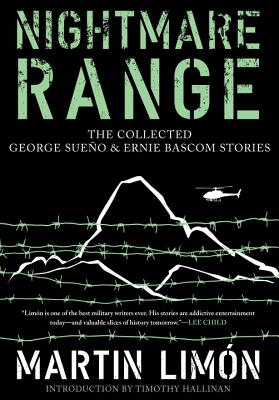
Many times, I’ve written in praise of Martin Limón‘s work. In the middle of March, as we were preparing for a trip, I didn’t want to start a new novel and then have to leave it behind. I don’t often go for books of short stories. But some times, they’re just the ticket. Once again, the trusty To Be Read pile came through. I picked up Nightmare Range, Martin’s 2013 collection of 17 stories with his Army investigators Ernie Bascom and George Sueño first published in mystery magazines between 1991 and 2003.
These two 1970s CID cops are drawn into all manner of crime investigations. That’s the magic of these stories; there are so many possible areas for hijinks in their world that each story is different and fresh. The rub of American and Korean cultures, the various facets of the US military structure – Martin weaves through these worlds with invention and skill. He’s reliably entertaining and interesting.
If You Like What We Do Here, Please Spread the Word!
BUY SMALL ~ SUPPORT SMALL LOCAL BUSINESSES










